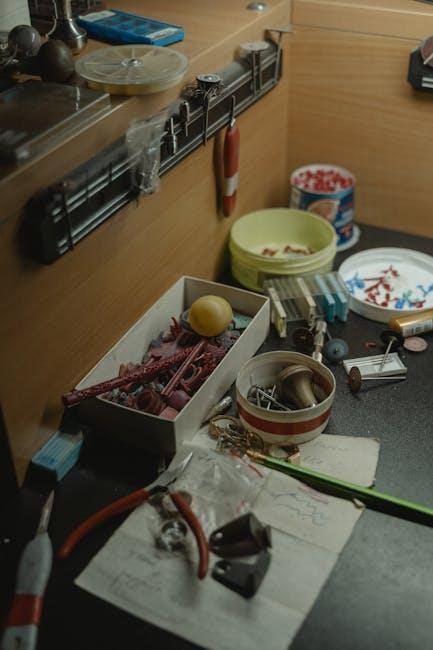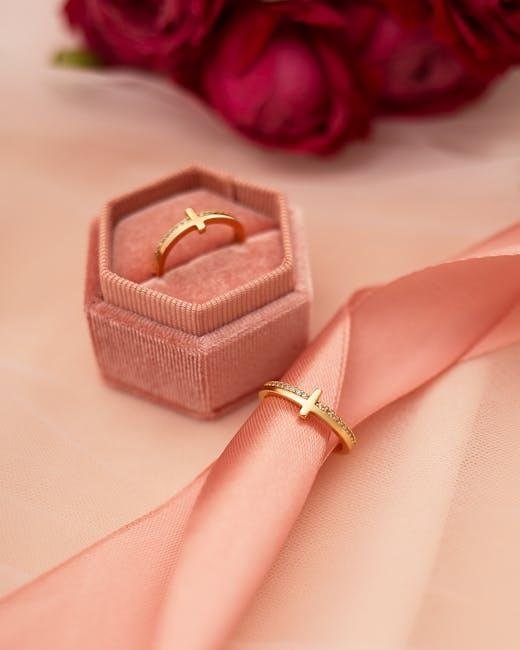Dive into Style: The Do’s and Don’ts of Wearing Jewelry in Water
Water and jewelry often find themselves on opposing sides of a shimmering debate. While the allure of accessorizing with yoru favourite pieces can elevate your look, the reality of water’s impact on materials can leave you questioning your choices. From glistening gold chains to dazzling diamond rings, the world of jewelry holds treasures that can enhance your individuality. However, submerging these precious items in poolside splashes, ocean waves, or even the gentle embrace of a shower can lead to unforeseen consequences. in this article, we’ll explore the essential do’s and don’ts of wearing jewelry in water, equipping you with the knowledge to protect your beloved adornments while ensuring you can enjoy both style and adventure. Whether you’re a beachgoer or a bath enthusiast, navigating this watery dilemma has never been clearer.
essential Jewelry Materials to Avoid in Water
When it comes to enjoying a swim or a refreshing dip, it’s essential to be mindful of the jewelry you wear. Certain materials can be especially susceptible to damage when exposed to water. Gold-plated items may lose their luster as the plating wears away, revealing less attractive base metals beneath. Similarly, costume jewelry made from non-metal materials can degrade and lose its charm, with potential discoloration and breakage becoming more likely in a watery habitat.
Another category to steer clear of includes natural gemstones such as turquoise and lapis lazuli. These stones can absorb water, leading to potential staining or deterioration. leather and fabric components on bracelets and necklaces are also not water-friendly,as thay may become warped or develop unpleasant odors over time. To keep your jewelry in pristine condition, always remove it before engaging in water activities, and consider storing it safely with this simple guide:
| Jewelry Material | Water Resistance |
|---|---|
| Gold-plated | poor |
| Costume Jewelry | Poor |
| Turquoise | Very Poor |
| Leather | poor |

Caring for Precious Metals: Best Practices
When it comes to wearing jewelry in water, especially pieces crafted from precious metals like gold, silver, or platinum, a little extra care can go a long way. it’s essential to recognize that chlorine,saltwater,and even soap can tarnish and damage your cherished items over time. To maintain their brilliance and integrity, consider the following guidelines:
- Remove Jewelry: Always take off your jewelry before swimming in pools, hot tubs, or the ocean.
- Minimize Exposure: Avoid exposing your jewelry to soaps or detergents while showering.
- Clean Regularly: if your jewelry does come into contact with water,clean it promptly with a soft cloth to remove any residues.
however, there are also some instances where it might be acceptable to wear your precious metal jewelry in light water activities. Understanding the types of metals and finishes will help guide your decisions:
| Type of Metal | Water Compatibility |
|---|---|
| Gold | Generally safe, but remove before chlorinated water. |
| Silver | Can tarnish; best removed before exposure. |
| Platinum | highly durable; mild exposure is fine. |
| Rhodium-Plated | Avoid water; plating may wear off. |

Styling with Confidence: Choosing Water-Friendly Accessories
Accessorizing for aquatic adventures requires a blend of functionality and style. When selecting water-friendly jewelry, focus on materials that can withstand the elements without compromising your look. Opt for stainless steel, silicone, and resin, wich not only resist corrosion but also offer a chic appeal. These materials can add a pop of color and interest to your ensemble while ensuring durability. To elevate your water-bound style, consider layering a few simple pieces, like a sleek silicone bracelet paired with a minimalist stainless steel pendant, to create a modern, carefree aesthetic.
While it’s essential to embrace a playful approach to your accessories, there are certain pieces best left at home. Jewelry made of copper, brass, or plated metals can tarnish or degrade quickly when exposed to water. Additionally, avoid wearing delicate chains or gemstone-encrusted pieces that may become damaged or dislodged in waves or water activities. For a swift reference, here’s a table showcasing what to wear and what to skip:
| Item | Wear | Don’t Wear |
|---|---|---|
| Material | Stainless Steel | Copper |
| Bracelets | Silicone Bands | Delicate Chains |
| Pendants | Resin Pieces | Gemstone Jewelry |

Post-Water Jewelry Care: Tips for Longevity and Shine
After enjoying a dip in the pool or a refreshing shower, it’s vital to treat your jewelry with care to maintain its brilliance and longevity.Gently dry your pieces with a soft cloth to remove any residual moisture, and be careful to avoid harsh scrubbing, which can lead to scratches. For added protection,consider storing your jewelry in a soft pouch or lined box to prevent any knick or dent from occurring.Additionally, it’s wise to avoid exposing your pieces to chlorine or saltwater, as these can tarnish metals or damage precious stones over time.
When it comes to cleaning, steer clear of abrasive cleaners. Rather, use a mixture of mild soap and warm water for gentle cleaning of your jewelry. For intricate designs or jewelry with stones, a soft-bristled toothbrush can definitely help reach those tighter spots without damaging the surface. Here’s a simple table to summarize essential care tips:
| Care Tip | Do | Don’t |
|---|---|---|
| Drying | Use a soft cloth | Rub aggressively |
| Storage | Keep in a soft pouch | Leave it exposed |
| Cleaning | Use mild soap and water | Use harsh chemicals |
Concluding Remarks
As we wade through the shimmering depths of jewelry styling, understanding the dos and don’ts of wearing accessories in water is crucial for maintaining their beauty and longevity. Whether you’re splashing around at the beach, enjoying a serene swim in the pool, or indulging in a soothing bath, keeping these guidelines in mind can help preserve your favorite pieces. Remember, a little extra care goes a long way in ensuring that your jewelry continues to sparkle and shine. So next time you find yourself near water, take a moment to reflect on these insights, and make informed choices that will keep your treasured adornments safe and stunning. Dive into aquatic adventures with confidence,knowing your jewelry is as cared for as it is loved.

